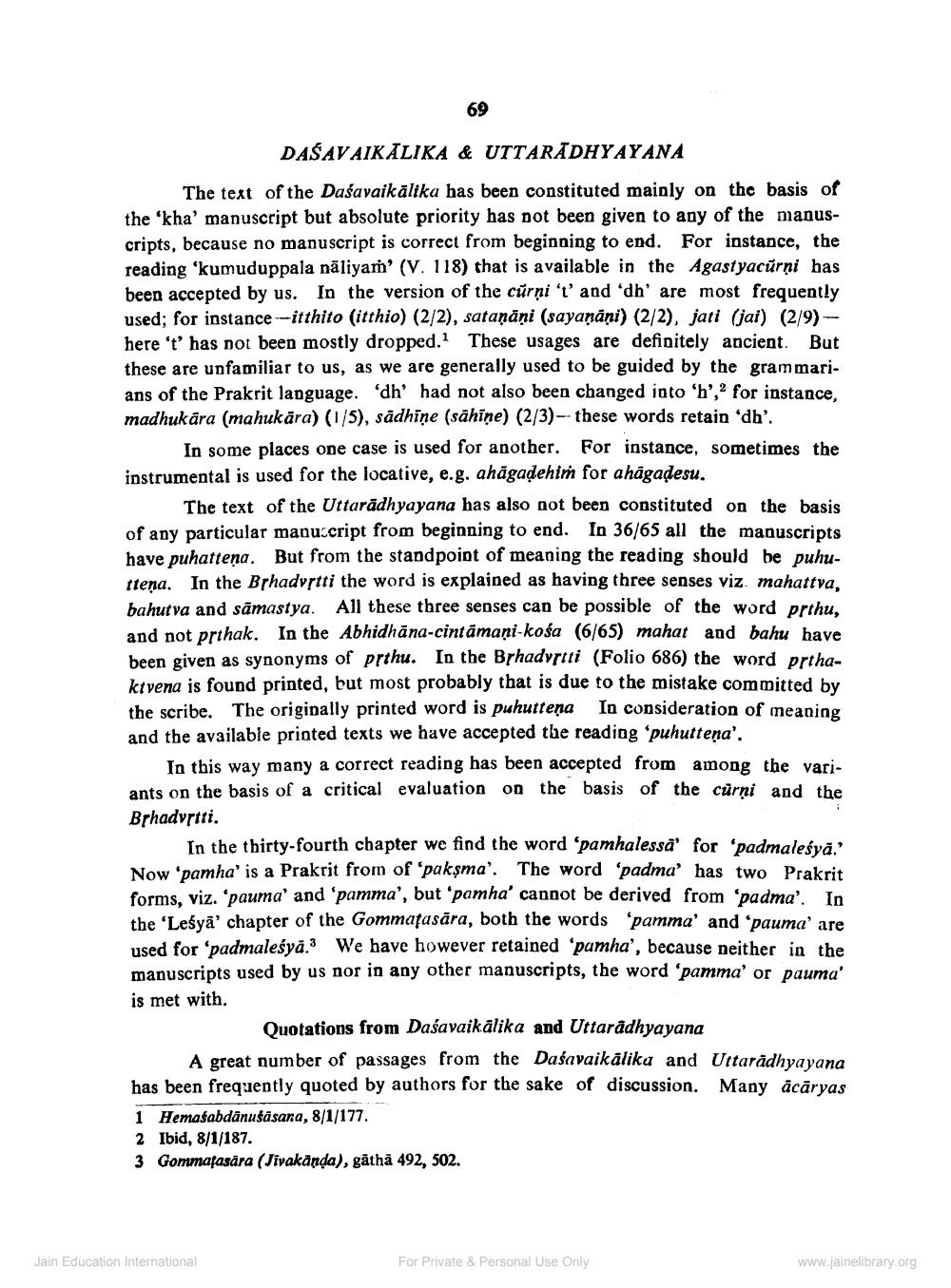________________
60
Th
.
DASAVAIKĀLIKA & UTTARĀDHYAYANA The text of the Daśavaikālika has been constituted mainly on the basis of the 'kha' manuscript but absolute priority has not been given to any of the manuscripts, because no manuscript is correct from beginning to end. For instance, the reading “kumuduppala näliyam' (V. 118) that is available in the Agastyacūrņi has been accepted by us. In the version of the curņi 't' and 'dh' are most frequently used; for instance-itthito (itthio) (2/2), sataņāņi (sayaņāņi) (2/2), jati (jai) (2/9) -- here 't' has not been mostly dropped. These usages are definitely ancient. But these are unfamiliar to us, as we are generally used to be guided by the grammarians of the Prakrit language. dh' had not also been changed into 'h', for instance, madhukāra (mahukāra) (1/5), sådhīņe (sāhīme) (2/3) -- these words retain 'dh'.
In some places one case is used for another. For instance, sometimes the instrumental is used for the locative, e.g. ahāgadehim for ahāgadesu.
The text of the Uttarādhyayana has also not been constituted on the basis of any particular manuscript from beginning to end. In 36/65 all the manuscripts have puhatteņa. But from the standpoint of meaning the reading should be puhuttena. In the Brhadvrtti the word is explained as having three senses viz. mahattva, bahut va and sāmastya. All these three senses can be possible of the word prthu, and not prthak. In the Abhidhāna-cintämaņi-kośa (6/65) mahat and bahu have been given as synonyms of prthu. In the Brhadvriti (Folio 686) the word prthaktvena is found printed, but most probably that is due to the mistake committed by the scribe. The originally printed word is puhuttena In consideration of meaning and the available printed texts we have accepted the reading ‘puhutteņa'.
In this way many a correct reading has been accepted from among the variants on the basis of a critical evaluation on the basis of the curni and the Brhadyrtti.
In the thirty-fourth chapter we find the word 'pamhalessä' for 'padmaleśya.' Now pamha' is a Prakrit from of 'paksma'. The word 'padma' has two Prakrit forms, viz. 'pauma' and 'pamma', but 'pamha' cannot be derived from 'padma'. In the 'Leśyā' chapter of the Gommafasāra, both the words "pamma' and 'pauma' are used for 'padmaleśyā.3 We have however retained 'pumha', because neither in the manuscripts used by us nor in any other manuscripts, the word 'pamma' or pauma' is met with
Quotations from Daśavaikälika and Uttaradhyayana A great number of passages from the Daśavaikälika and Uttaradhyayana has been frequently quoted by authors for the sake of discussion. Many acāryas 1 Hemaśabdānušāsana, 8/1/177. 2 Ibid, 8/1/187. 3 Gommafasāra (Jivakanda), gāthā 492, 502.
Jain Education International
For Private & Personal Use Only
www.jainelibrary.org




